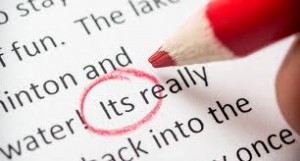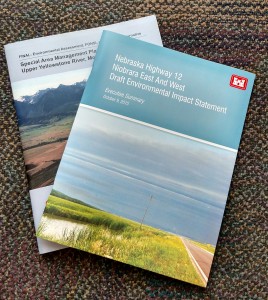As a “seasoned” employee (and grant writer), I review and edit writing by others; other employees, contractors, and (after hours) grant applicants. I enjoy reviewing other peoples’ writing and improving on what they’ve begun. I’ve found that I often repeat comments from one writer to the next, and perhaps if writers had these comments “up front” they wouldn’t have as many edits once I review.
Grammar matters (and so do commas)
There are common standards in writing that should be followed to ensure accurate communication. Often, the correct usage and the incorrect usage both “sound ok” to the writer, probably because of familiarity from casual conv ersations and social media. However, grammatical details matter in professional writing. Repetitive use of correct language will help writers familiarize themselves with the correct usage, allowing them to “key in” on common problem areas, such as “less vs. fewer,” “I vs. me,” and comma dilemmas.
ersations and social media. However, grammatical details matter in professional writing. Repetitive use of correct language will help writers familiarize themselves with the correct usage, allowing them to “key in” on common problem areas, such as “less vs. fewer,” “I vs. me,” and comma dilemmas.
Who’s Your Audience?
When writing any kind of document, first determine the anticipated readers. Children? College students? The General Public? PhD researchers? Knowledge of the anticipated readers can cue you in to the reading level needed to achieve the best communication. The Flesch-Kincaid readability score is a common method to determine readability (and grade level). The higher the score, the easier the document is to read. The score is correlated with a grade level or age of the anticipated reader. The score is based on a formula, however typically writers utilize online programs to determine the score. Many versions of Microsoft Word will calculate the “readibility” while checking spelling, grammar, and word count.

My latest version of Microsoft Word does not have this feature, however knowing the basis for the score can be used informally to adjust reading levels. Does the document seem too technical? Use common words with fewer syllables and shorter sentences to raise the readability. In contrast, if the document sounds like a Dr. Seuss book, combine sentences and use synonyms with more syllables. Some of us still use a hard-copy thesaurus, but online tools are also available.
You’ve Got the Look!
What’s the first thing you imagine when hearing the words “government document?” For me, I imagine a heavy black-and-white document with small font, no graphics or photos, and a boring message. As a writer of government documents, even I can’t dispel that boring image from my head! Since the purpose of the doc uments I write (or review, if contracted) is to inform the general public, the document should:
uments I write (or review, if contracted) is to inform the general public, the document should:
- look inviting (color, photos, graphics, text boxes, etc)
- have a readability around grade 8 to 10 (technical appendices can have a higher readability)
- be relatively short (less than 50 pages), with details in a separate volume or CD
Here are some hints from a recent blog that can help you with document development and presentation. The photo is of a couple recent documents we’ve done in my office that were written and packaged to encourage public involvement. If fully printed, the document would be about four inches thick! Instead, we printed the Executive Summary (with color and graphics), including the full document text on a CD attached to the back cover. Not only does the document look more inviting, the printing costs were less. We printed several “full” copies for those that aren’t computer-savvy and have them available at libraries. Downloadable chapters are available on our webpage. Not all government documents need public input and review, but for those documents that do, a user-friendly Executive Summary with a CD may be a good option.
Our District eliminated writer/editor positions over a decade ago. When I first started in my office, writer-editors reviewed documents prior to their release. Press releases are still reviewed by our Public Affairs office, but for most documents we are on our own. Many contractors have writer-editors, so contracted documents often get editing service, but the organization and presentation of the document is determined in the scope of work (which we write).
Does your agency use editors, or is editing up to the document writer? How does your office make government documents understandable and appealing? Please add your ideas and suggestions in the comments.
Becky Latka is part of the GovLoop Featured Blogger program, where we feature blog posts by government voices from all across the country (and world!). To see more Featured Blogger posts, click here.





Cool post! Definitely going to try the readability score on my next article!